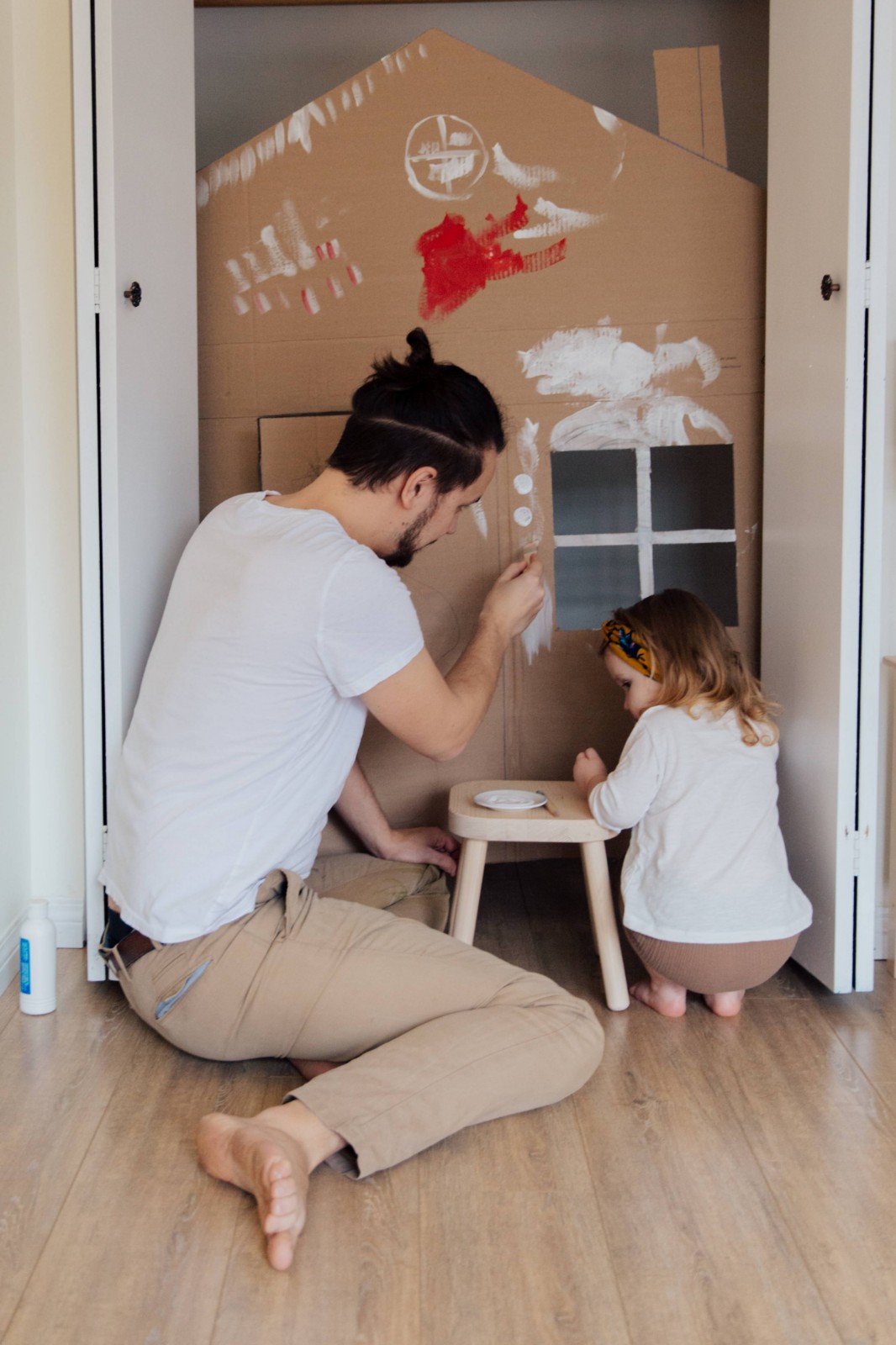
Knowing how to help a child who struggles to learn is one of the greatest parenting challenges imaginable. When our children don’t fit the traditional model of what a student is or should be able to do, it can be a painful and frustrating experience for the entire family. Is it possible that the arts, while not a cure-all for what affects a child’s learning process, can provide a lifeline to children who are having trouble succeeding in school?
知道如何帮助在学习方面有困难的小朋友是能想像得出的最大的育儿挑战之一。 当小朋 友不像传统所认为的小朋友或者没有做本来应该做的事情时,这对整个家庭来说都是痛 苦和沮丧的经历。尽管艺术不是影响小朋友学习的万灵药,但它是否可能给在学习方面 有困难的小朋友提供帮助呢?
Beth Olshansky, author of “The Power of Pictures: Creating Pathways to Literacy Through Art,” thinks so. She noticed that with the help of a paintbrush, her daughter was able to access and express imaginative ideas and descriptive language which were otherwise not available to her. Beth was so intrigued by what she observed in her daughter’s learning process that she founded a program called Picturing Writing, to provide struggling learners with artistic means to become stronger readers and writers. Beth Olshansky,
“The Power of Pictures: Creating Pathways to Literacy Through Art”的作者也这样认为。她留意到借助于画刷,她的女儿可以使用和表达一些 有创意的想法及描述性语言。Beth对女儿的学习过程非常感兴趣,她还创立了一个名 叫Picturing Writing的课程,让苦苦挣扎的学习者通过艺术的方法来提高阅读及书写能 力。
Laura, a parent of an elementary school-aged child, saw similar things happen with her daughter. She describes Carly as a hardworking, compassionate child with an active imagination and solid thinking skills, but who also has been diagnosed with severe, double-deficit dyslexia. Carly draws images to help her remember the meaning of words, because written language does not. Laura recalls a time when Carly had to complete a research assignment: “Because writing, even formulating ideas, linearly is difficult for her, we asked permission for her to express herself through art. She chose clay.” Carly created sculptures to reflect her understanding of concepts and ideas she was learning. Laura now adamantly believes thatchildren can demonstrate nuances they cannot verbally express through visual arts.
Laura, 一位小学生的家长,在女儿身上看到了相似的事情。她认为Carly是一个勤奋 的、富有同情心、想象力及立体思维技巧的孩子,但是被诊断为严重的难语症。Carly会 画一些图片来帮助她记忆单词的意思,因为书面文字做不到这样。Laura回想起Carly完 成研究任务那段时间:“因为书写对她来说比较难,所以我们征求她的意见来通过艺术表 达自己。她选择了粘土。”Carly创作了雕塑来反映她对正在学习的概念的理解。现 在Laura坚定地认为小朋友能够通过视觉艺术来展示出无法用语言表达的细微差别。
Laura also believes that engagement in the arts helps Carly see herself as a successful learner. “Carly elected to take a class in sculpture over the summer. Now we can remind her that at one time she didn’t know to carve in stone, and by the end of the class she had created a bird and a fish.”
Laura也相信参与艺术活动有助于Carly认为自己是成功的学习者。“Carly在夏天选择参 加了雕塑课程,现在我们会跟她说刚开始的时候她不知道怎么在石头上雕刻,但在课程 结束时她已经可以创作小鸟或小鱼了。”
Jan’s experience echoes Beth’s and Laura’s. She says: “My son has ADHD, sensory processing disorder, and bipolar disorder. He has trouble focusing during the school day, but he loves to build and create.” Through art, “he is able to easily problem solve … his imagination runs. This is one of his strengths.” Jan also says that her son takes an art class outside of school. “He loves this class and comes home happy, proud of his creations, and wanting to draw!”
Jan的经历和Beth和Laura的一样。她说:“我的儿子有注意力不足型多动症,感官处理 失调和躁郁症。他在学校的时候很难集中注意力,但他喜欢创作。通过艺术,他能够解 决问题,想象力也有所发展,这就是他的强项之一。”Jan也说她儿子在校外参加了艺术 课程。“他喜欢这种艺术课程,回到家也很开心,并为他自己的作品感到骄傲,而且很想 要画画!”
Researchers at Johns Hopkins University School of Education agree with what Beth, Laura, and Jan discovered on their own: the importance of the arts in children’s lives. A study shared at the 2009 Learning, Arts, and the Brain Summit reported that children showed more motivation, paid closer attention, and remembered what they learned more easily when the arts were integrated into the curriculum.
美国约翰霍普金斯大学的研究人员同意Beth的发现:艺术在儿童生活中的重要 性。2009年的学习、艺术和大脑峰会研究报告表明,当把艺术融入到学科中时,小朋友 展示出更多的动力,会花费更多的精力,并且能够更容易地记住他们学到的东西。
If you notice that your child is struggling to learn, here are a few strategies for how to lean on the arts as your ally and advocate.
如果你留意到小朋友在学习方面有困难,以下是一些如何运用艺术来帮助你的方法。
Reluctance writing: If your child shows anxiety facing a blank page, give him the chance to build something, create a collage or draw a picture before ever putting a pen to paper. Visually and kinesthetically rich experiences will stimulate language development and support his ability to express his ideas with words.
不情愿书写:如果小朋友对空白页感到焦虑,在写之前给他机会去做一些事情,创作一 幅拼贴画或画一幅图片。丰富的视觉和动作体验将促进小朋友的语言发展和表达能力。
Communicating with parents, you might need to be the child’s advocate if her parents don’t understand yet the relationship between the arts and learning. Explain to the parents that artistic projects can help make your child’s thinking more visible to others, assist her memory and lead to more success in school.
与家长沟通:如果家长还没有理解艺术与学习的关系,你可能需要沟通来支持小朋友。 向家长解释艺术可以使小朋友的想法更加可视化, 帮助他们的记忆力,并使他们更好地 学习。
Talk to your child about his or her strengths: Too often, children whose abilities lie in the visual, spatial and kinesthetic realms believe themselves to be less intelligent than their peers, especially in a school culture with so much standardized testing. The most important lifeline child can have is the understanding that being artistic is a way of being “smart”!
与小朋友沟通他们的强项:往往在视觉、空间和动觉方面强的小朋友会认为他们不如同 龄人聪明,尤其是在有很多标准测试的学校里。对小朋友来说最重要的就是艺术是一种 会变“聪明”的方法!